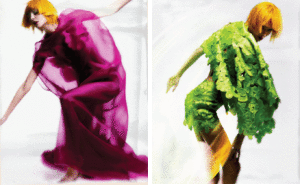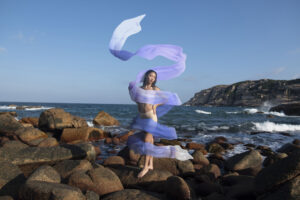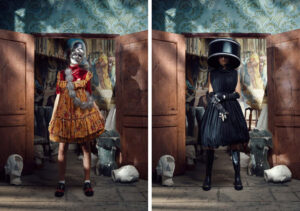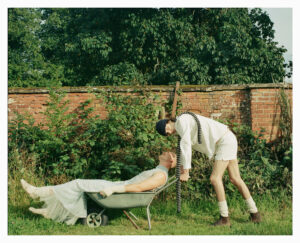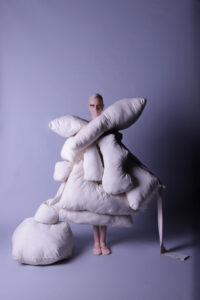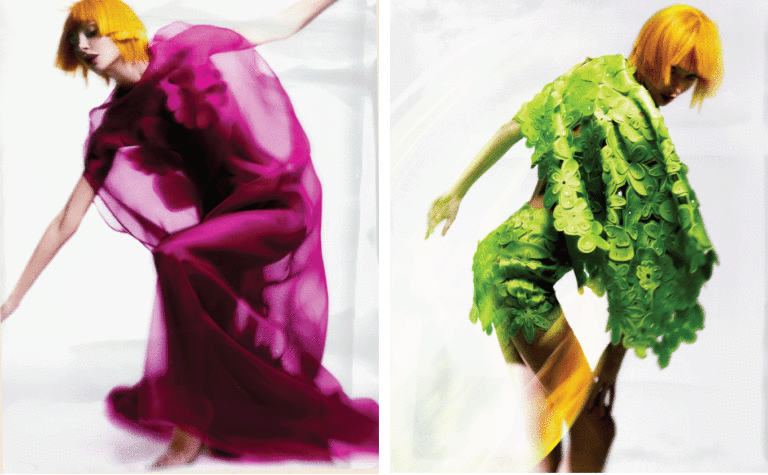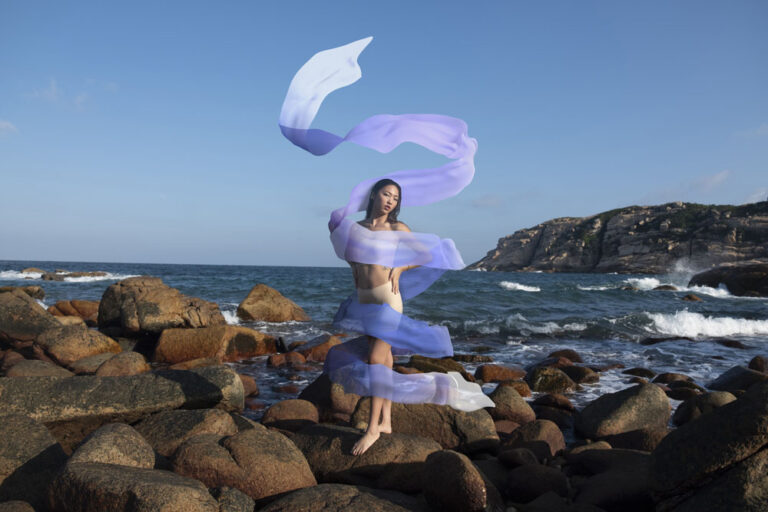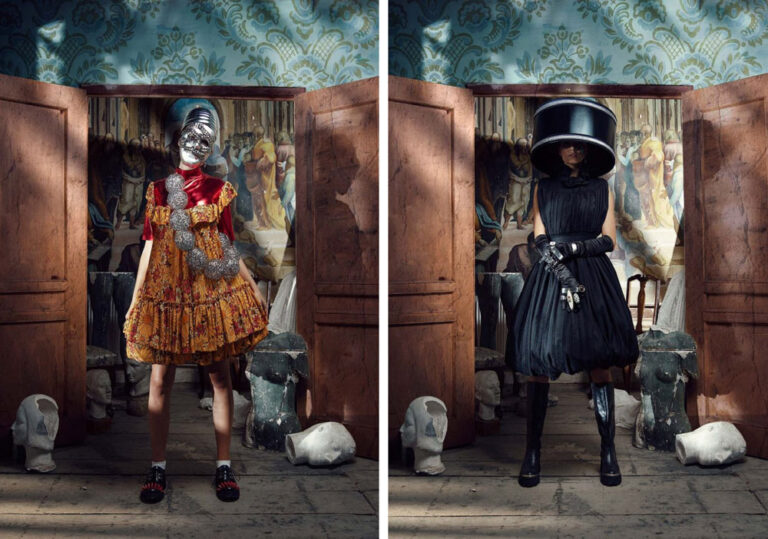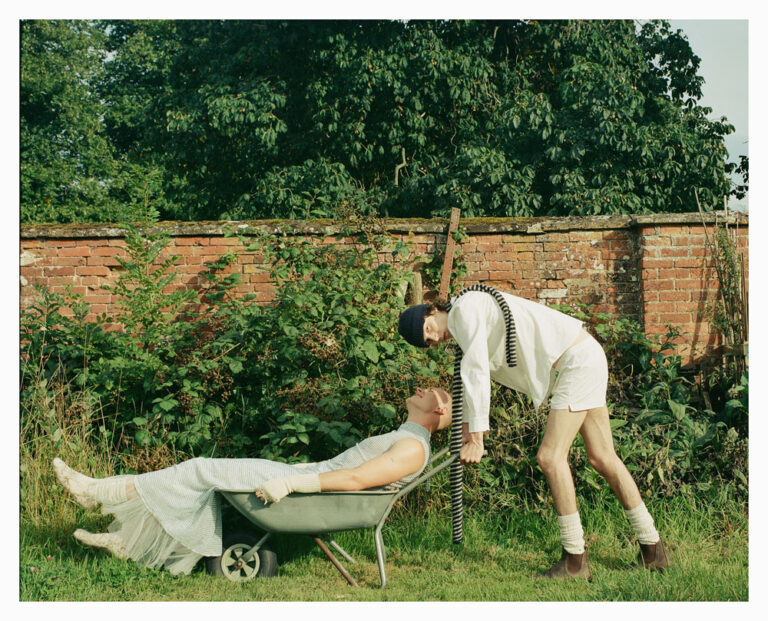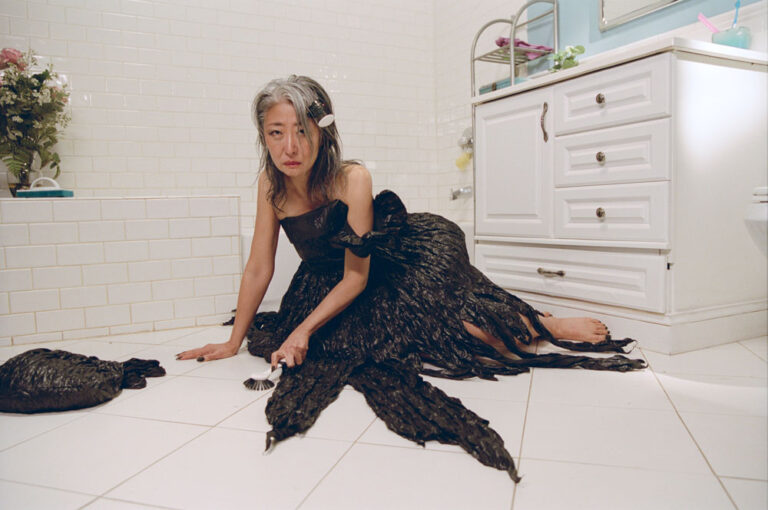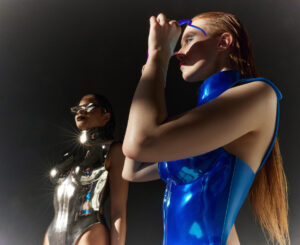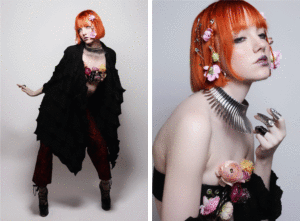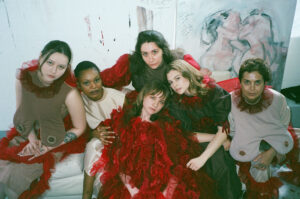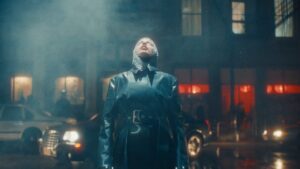Tina Ma is a Singaporean fashion designer based in New York City. She graduated from Parsons School of Design and was a CFDA Design Scholar Award Finalist in 2020. We spoke to her about her latest collection, Platicity 01. This 9 look collection explores how our exterior environment and experiences shape our identity and mode of expression which for everyone, to an extent, is fashion.
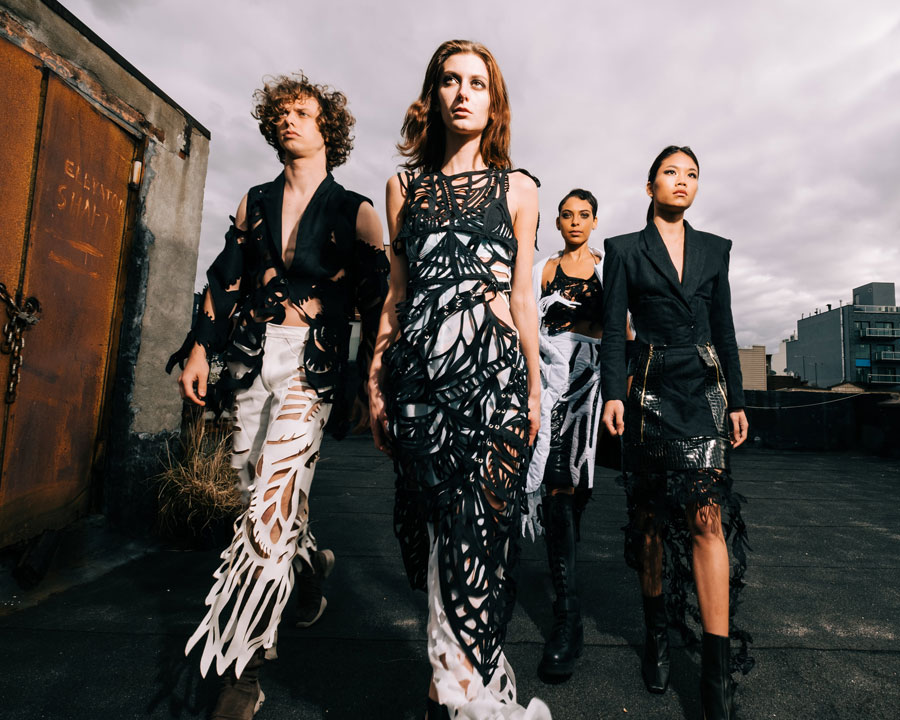
I understand that for this collection, Plasticity 01, you delved into your past to gain an understanding of ‘the self’ by looking through childhood photos, art, and writings. Looking back, was there a moment where it was clear that fashion would be your form of creative expression?
I’ve always been drawn to fashion design but did not begin charting a defined course until my sophomore year of college. After graduating high school, my 2D and 3D execution skills in the visual arts and design became evident but I was not sure which field I wanted to go into. Wanting to keep my options open and get as much exposure as possible, I applied to Parsons School of Design as an undeclared major and moved to New York City in 2017. Upon moving to New York City, I found that the previously abstract concept of fashion could be transformed into a tangible and rewarding career and formally selected Fashion Design as my major. It is an exciting and limitless field that encompasses everything I wanted to create.

You incorporated traditional Chinese paper cuttings made by your great-great-grandmother into your collection. Could you expand on the personal, cultural, and creative significance of this?
Defining myself has always been challenging but diving into my ancestry and looking through my great-great-grandmother’s paper cuttings has added a lot of clarity. Growing up, I’ve always been curious if a person’s traits are inherited or learned. I grew up drawing and painting with my dad, but other than him, there isn’t anyone in my family who was as interested or as passionate about the visual arts and design as I was. Therefore, it was especially significant for me to determine where my artistic inclinations came from. And so it was really exciting when I found out about my great-great-grandmother’s paper cuttings two years ago.
These hundred-year-old Chinese paper cut-outs by my great-great-grandmother differ from the norm in that they are cut on tanned paper and exclusively feature birds. As one of the most important types of Chinese folk art, papercutting is used to celebrate occasions such as the Lunar New Year and weddings. Therefore, these pieces are usually cut out of red paper featuring words or figures that symbolize luck and happiness. Although the intention behind her paper cuttings isn’t clear as it hasn’t been written or passed down, I do see commonalities between her work and mine. In my opinion, the strongest similarity between us as an artist and a designer is that we diverge from the norm whilst still preserving the craft and the quality when it comes to the execution of our chosen medium. Although I’ve never met her, I’m very grateful to have her as the inspiration for my work and as a figure to look up to as well.

Were there any challenges when working with these hundred-year-old paper cut-outs?
Definitely. Because paper cutting and garment construction are such different crafts, there were a lot of technical obstacles I had to overcome. My first challenge was figuring out how I’d translate the visuals of paper cuttings onto the fabric of different textures and weights. After weeks of experimentation of hand cutting and microblading, I decided to laser cut as it yields the most precision. Laser cutting then imposed its own set of limitations when selecting fabrics as many materials would fray or burn. Another set of challenges revolves around implementing 2D cutouts to the 3D body. This gave me the opportunity to explore a variety of innovative pattern-making techniques, by building the cut-out shapes into the landscape of the body through physical toiles and on 3D modeling software.

Could you expand on the different processes you used to incorporate the paper cut-outs?
In my nine look collection, there were five different forms in which the paper cuttings were built into my garments. Firstly, I laser cut the paper cut shapes in their original, bird-like form to be used as an appliqué for the halter top and leather skirt. For pieces such as the white denim pants, I also integrated certain aspects of the birds within the pattern of the garment itself. Furthermore, I distorted the visuals of the paper cuttings by making them abstract, playing with the positive and negative spaces, which is exhibited in the black denim dress. I then digitally printed this abstract graphic into an array of colors to be used as placement prints as demonstrated in the blue gradient dress. Lastly, I incorporated laser cutting into the puffer garments such as the jacket and skirt, quilting circularly according to the edges of each fabric cutout.
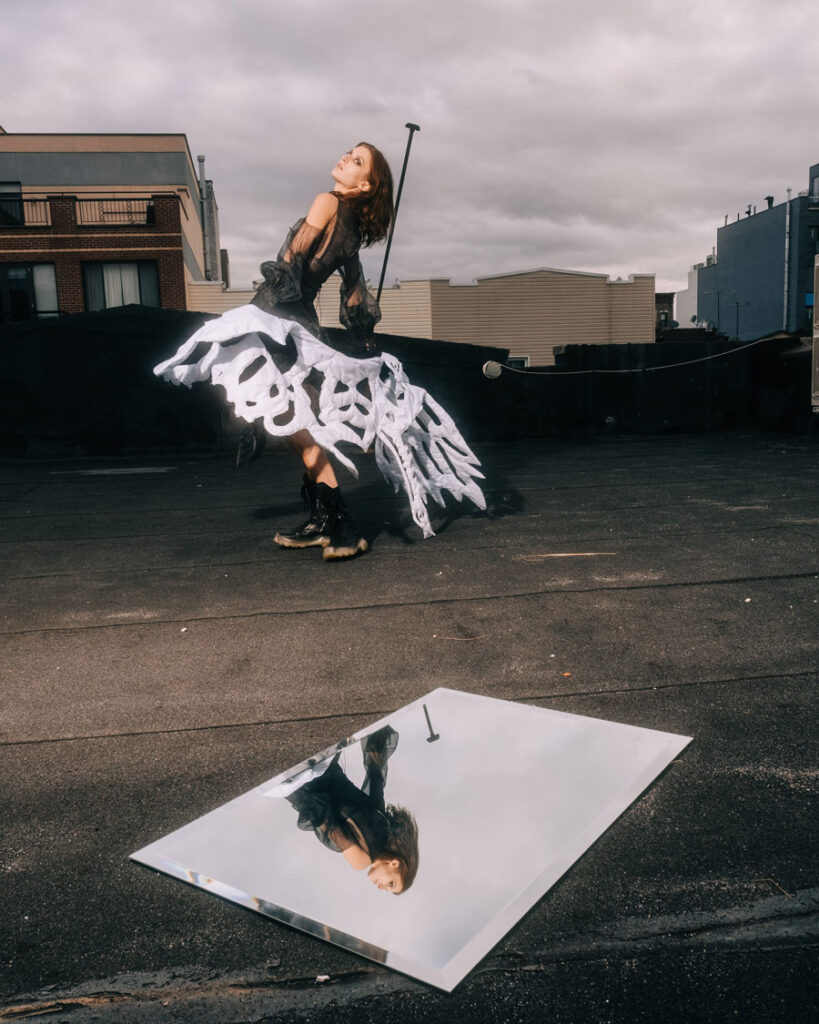
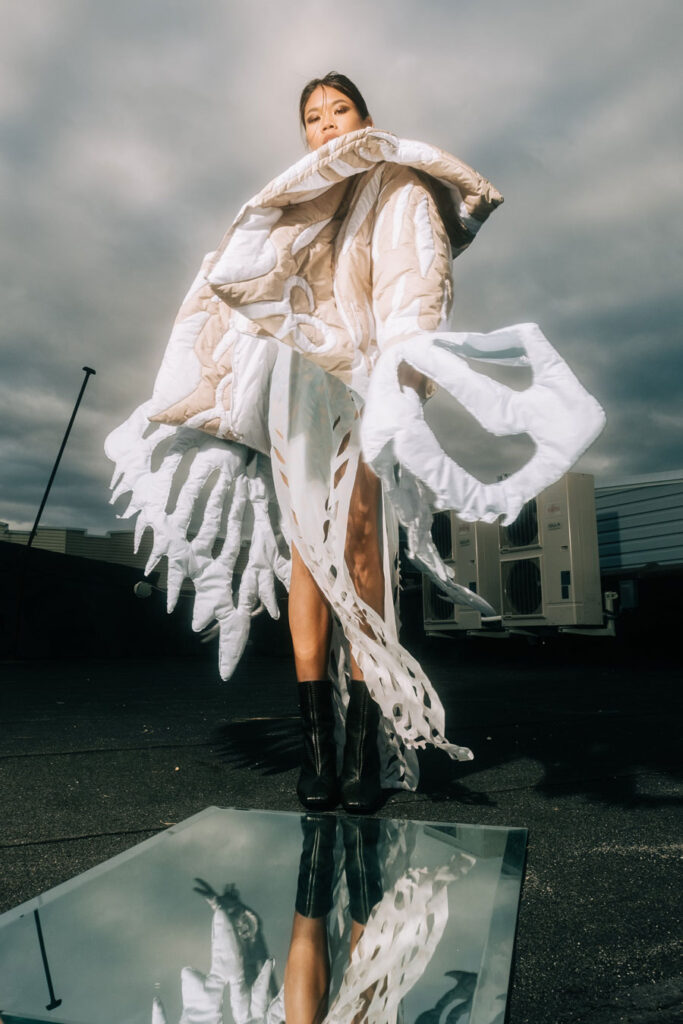
How has this collection influenced your overall practice? Where do you see yourself going from here?
Created during the height of covid, this collection has helped me find my purpose as a designer. Conceptually, I like to play on the existing narrative of the fashion industry, reacting to global and cultural events whilst introducing an element of the new and unexpected. Furthermore, this collection has also made me realize that I am a very technical fashion designer. Establishing new methodologies of tailoring and garment construction is a challenge I constantly impose upon myself and it is something I am excited by. Quality garments have always intrigued me in terms of how they are constructed and I would like to emulate the same mystery and excitement within the clothes that I create. Going forward, I would like to build upon the spirit of my latest collection and use it as a catalyst to push the confines of the industry’s expectations as well as my own.
To view more of Tina Ma’s work visit their Instagram @tinamastudio
Or visit their website www.tinamastudio.com



